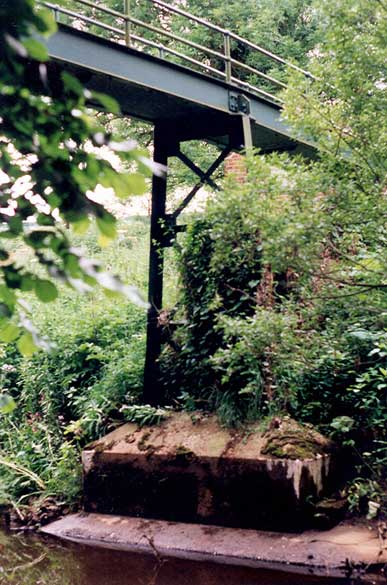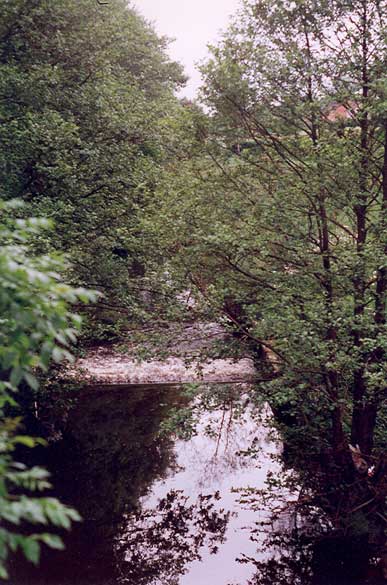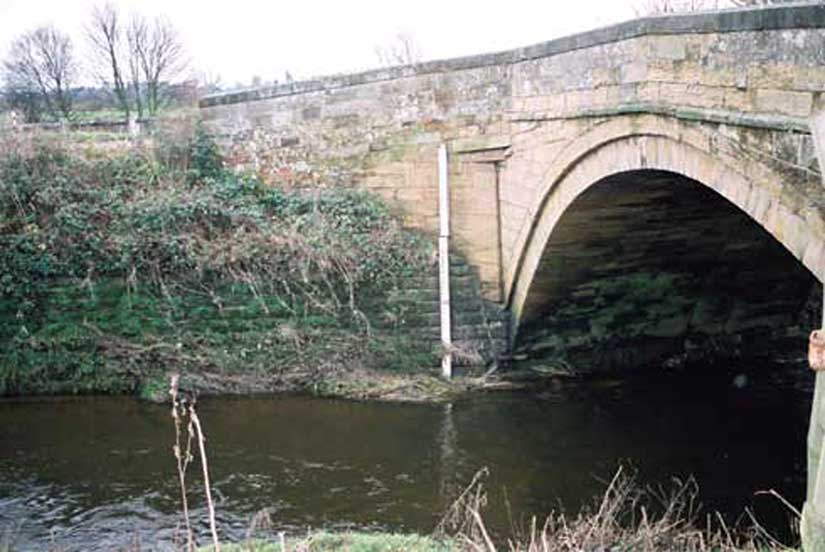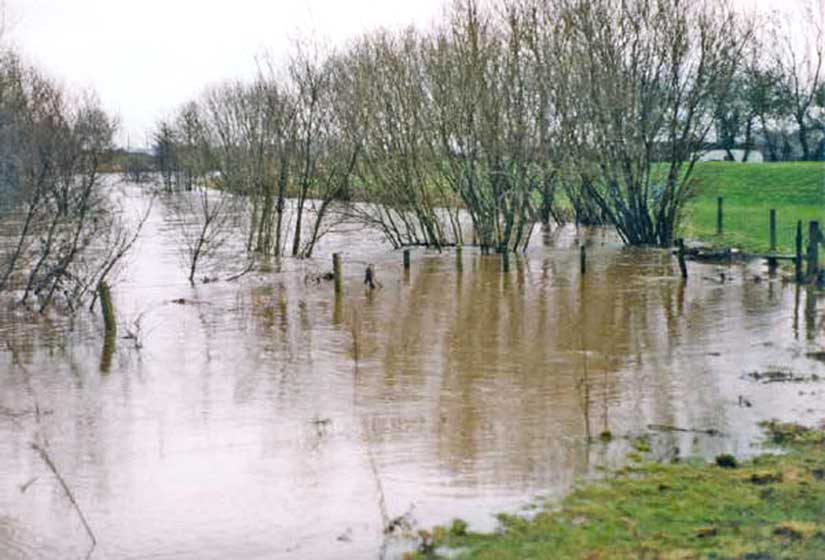The River
Seven
There would not have been a
village without the River Seven. On some 19th century maps the spelling is
Severn. It was the only source of water for hundreds of years. There are
plenty of fish including trout. Kingfishers and Herons are seen occasionally.
Sulphur Springs
The Sulphur Spring in the river
Seven at Normanby was accessed by the villagers
from the kissing gate to the rear of the
St Andrew's Church. It was in line with the boundary fences of the Fish Ponds and
that of the Sun Inn. Before the river widening in the early fifties it
rose out of the river bank and was surrounded by boulders the water ran from a
piece of iron spouting down the bank into the river. People I have
spoken to described the smell as that of bad eggs, and the colour of the run
off to the river to be green and blue slime. The water was collected in
white enamel buckets, it was then left standing for some 24 hours before use,
this dispersed the smell. Since the river widening the spring now rises
in the river bed and it is visible when the river is low.
Up to the end of 1sr World War the villagers on Mondays
would collect water from the river to fill the copper boilers for the weekly
wash.
Other Sulphur Springs exist in
the area one on the green at Salton and the other
at Risebro close to Spring Wood and adjoining
Coopers Covert each were said to be in line with the Spa at Harrogate and of
similar quality by the
late Mr Tweedie of Risebro
Hall.
Hundreds of thousands have drunk from Harrogate’s ‘healing’ mineral waters.
But thanks to a new European health and safety directive, visitors to the spa
town are now banned from taking the merest sip. Council officials have been
forced to turn off taps after the sulphur water – once said by the Victorians
to cure ailments ranging from gout to lumbago – was graded as ‘unwholesome’
There used to be stepping
stones upstream of the road bridge and in the Fish Ponds to walk across to the
opposite bank. Residents collected Fossils from the river
bed in the Fish Ponds and it was a established picnic area for the village
people. The iron bridge to the north of the village was once a diving point
for children (before the weir was constructed).
 |
 |
|
c.2000 Iron Bridge |
c.2000 Weir |
River
Seven Wikipedia
There have been many
floods over the years. In 1868 a man narrowly escaped drowning at
Normanby Bridge when he was carried downstream for
a quarter of a mile. The 5th of September 1872 was another high flood.
This and previous
flooding encouraged the North Yorkshire River Board to improve the Seven's
flow and rebuild the flood banks in the 1950's. The flood banks were
constructed using a narrow gauge railway to transport the spoil.
The spoil wagons being loaded by drag-line excavator
operated by William Frank (junior) the engine driver being John Harding.
c.1950 opposite Bridge Farm
c.1950 Barn Farm flood bank & Steam engine "Stand Pipe"

In the photograph of the
Engine derailment at Normanby bridge note the capped Steam Engine's stand pipe
referred to in the the village water supply account. Shovels were used in the final phases
to tidy up the flood banks William Frank (senior) with is always with a shiny shovel
well polished with hard work.
Only two compaction rammers were used on the flood banks, the compaction was
done in rows very similar to forming earth steps on a slope. Loose spoil
was scattered over the steps formed, raked out to a uniform slope and grass
seeded. After widening the river, Willow erosion mats were used on the
banks that were subject to fast flows and on bends to stop undermining.
The willows were cut back from time to time, shrubs and trees have grown
high since this photograph.

River Seven at
Normanby, Sample Hydrograph of Gauged Daily Flows.
https://flood-warning-information.service.gov.uk/station/8148?direction=u
In more recent times the
road at the south end of the village has been under
2 foot of water and the old road at the north end by the council houses has also
been flooded.
Pasture House flood banks under water
Pasture House flood banks under water
Floods of 2002 at the Sun Inn

Top